This article is part of our series Battle of the Brands, in which we compare category-leading products to their counterparts to determine which are actually worth your money.
The race for the best “professional” phone of the year is on. Apple’s iPhone 15 Pro offers a surprising amount of upgrades over the 14 Pro, including a huge camera update and titanium design. Meanwhile, the Pixel 8 Pro from Google doubles down on artificial intelligence for a lot of new features while also upgrading some of the hardware for a more robust experience.
Both phones start at $999, are undoubtedly some of the best smartphones you can get and are different enough that buying one over the other can be a tough decision.
Luckily for you, we’re breaking down all the differences right here to help guide you in the right direction.
iPhone 15 Pro vs. Google Pixel 8 Pro at a glance
Get the iPhone 15 Pro if you want the best possible performance and a set of truly professional-grade cameras.
If Google's range of handy AI smarts appeal to you — from screening calls to enabling robust, instant image editing — the Pixel 8 Pro is a great choice.
Quick comparison
| Display |
6.7-inch, 2796 x 1290 Super Retina XDR display |
6.7-inch, 2992 x 1344 always-on Super Actua display (1 to 120Hz) |
|---|---|---|
| Processor |
Apple A17 Pro |
Google Tensor G3 with Titan M2 |
| Storage |
256GB / 512GB / 1TB |
128GB / 256GB / 512GB / 1TB |
| Memory |
8GB |
12GB |
| Cameras |
48-megapixel main camera, 12-megapixel ultrawide, 12-megapixel 5x telephoto with 25x digital zoom |
50-megapixel Octa PD wide camera, 12-megapixel Quad PD ultrawide camera, 48-megapixel Quad PD telephoto camera |
| Size and weight |
6.29 x 3.02 x 0.32 inches, 7.81 ounces |
6.4 x 3.0 x 0.3 inches, 7.5 ounces |
| Colors |
Black, White, Blue, Natural Titanium |
Bay, Obsidian, Porcelain |
Robust titanium vs. beautiful aluminum
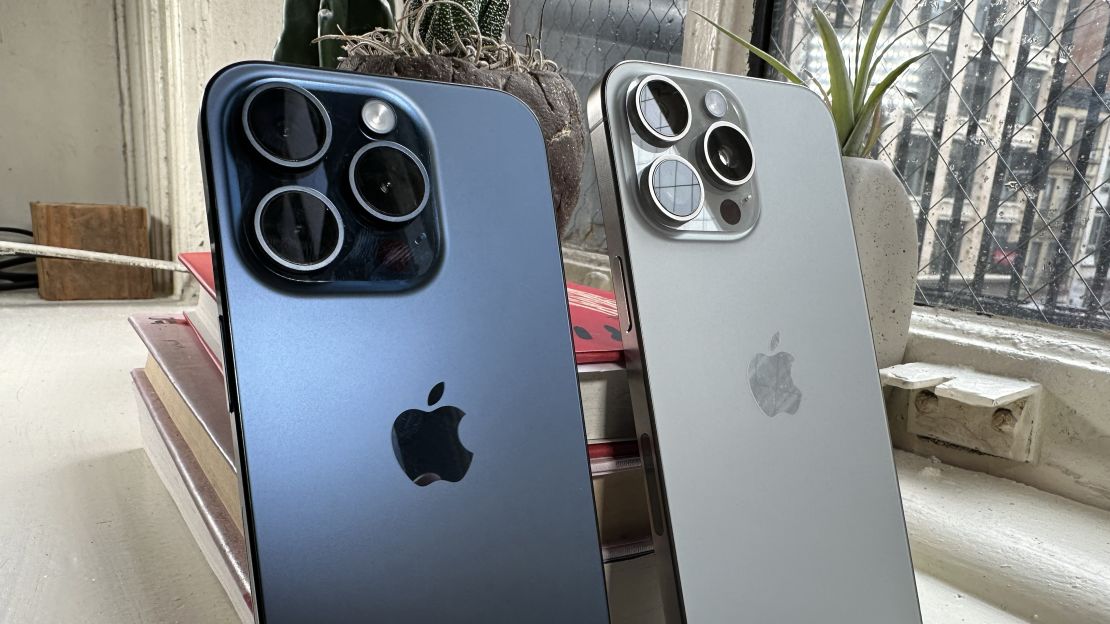
The iPhone 15 Pro made the switch to a titanium frame this year, which gives the phone a robust and industrial vibe. But pick it up and you’ll realize that it’s not just lighter than the 14 Pro series by a good amount; it’s also more comfortable to hold. That’s because Apple added slight curves to the edges of the phone so that it contours with your hand instead of pressing into your hand like the squared-off edges on last year’s phones.
The differences are most evident on the iPhone 15 Pro Max, whose weight and feel in the hand are significantly improved year over year. The bezels around both phones’ screens have also been tweaked to be about a third thinner than before, so they each look a bit more modern. Plus, there’s the addition of the Action button: Replacing the mute switch, the Action button can be reprogrammed to almost any action you want, whether that’s opening an app or simply muting your phone.
The Pixel 8 Pro doesn’t take any massive departures from the 7 Pro in terms of design, but it does retain Google’s friendly eye-catching aesthetic. The corners are a bit rounder this time, as are the sides. The display glass isn’t curved this time around, which a lot of potential buyers will appreciate since many folks disliked the curved edges of the Pixel 7 Pro’s screen.
From a looks perspective, I’ll give it to Google; the Pixel 8 Pro can certainly grab attention a lot quicker than the iPhone, thanks to the glossy border, huge camera bar and more vibrant colors. That’s not to say the iPhone is ugly or anything. Both are great-looking phones for the money, but anyone who wants a conversation starter of a smartphone will want to look at the Pixel.

It’s also worth mentioning the iPhone 15 Pro comes in two sizes, while the Pixel 8 Pro only ships in one size: big. Yes, there’s a smaller Pixel 8, but you won’t get the same pro-level experience as the 8 Pro. Meanwhile, Apple keeps the 15 Pro and 15 Pro Max almost identical, save for a few camera differences. So if you want a 6.1-inch professional smartphone, the 15 Pro will be for you. Everyone else will need to stick with 6.7 inches, which the 15 Pro Max and Pixel 8 Pro come in.
TL;DR: Both phones have premium designs with excellent craftsmanship, but those looking to stand out will want to shop for the Pixel 8 Pro.
If you want the brightest screen, go for the Pixel 8 Pro
Speaking of screens, there’s one particular area that Google has Apple beat: brightness.
The 6.7-inch Super Actua Display checks all of the boxes for a flagship smartphone, including a sharp Quad HD+ resolution, a 120Hz refresh rate for super-smooth scrolling and an OLED panel for rich colors and deep contrast. But the real kicker is in brightness, which can reach all the way up to 2,400 nits, making the Pixel 8 Pro one of the brightest smartphones on the market.
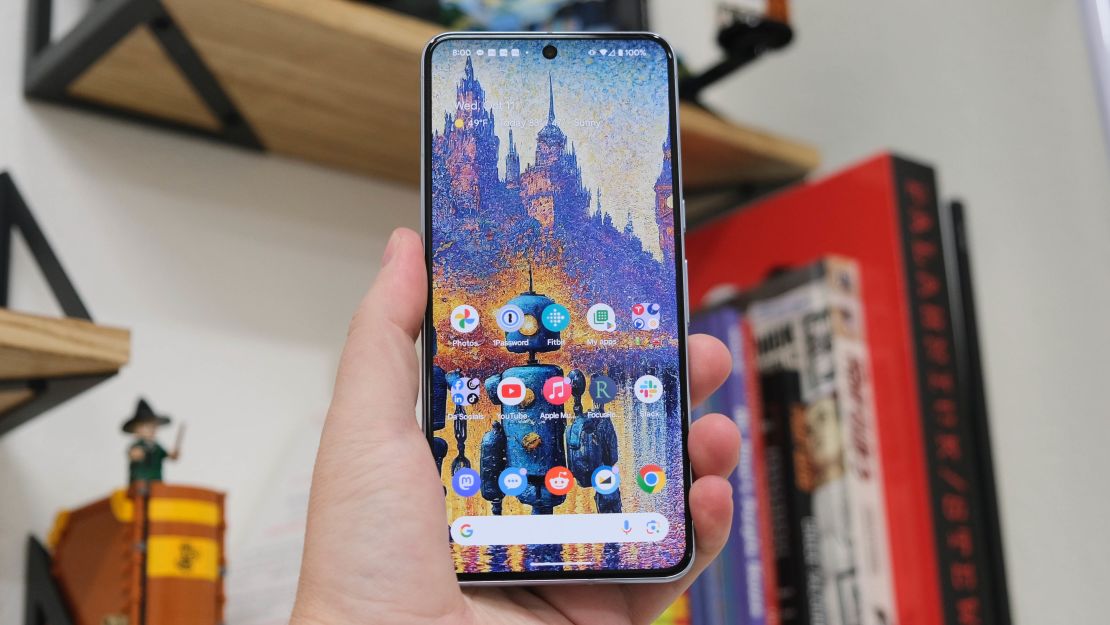
Of course, the iPhone 15 Pro’s displays are no slouches. The 6.1-inch and 6.7-inch Super Retina XDR displays have similar specs like sharp resolutions, 120Hz refresh rates and OLED panels. They’re also some of the most color-accurate displays on the market with a well-balanced approach to saturation. However, in terms of brightness, they can only peak at 2,000 nits.
Obviously, you won’t be using either phone at peak brightness all the time; both the iPhone and Pixel will wait until it’s in direct sunlight to use its full force, but if you want the easiest screen to see in the sun, the Pixel 8 Pro is it.
TL;DR: Find yourself in direct sunlight often? The Pixel 8 Pro will be easier to see, thanks to 400 nits of extra brightness compared to the iPhone 15 Pro.
Wait, they have the same port?
Look at the bottom of either of these phones and you’d think you were seeing double — that’s because you are. For the first time ever, the iPhone and the Pixel have the same exact charging port: USB-C. Apple finally ditched Lightning with the 15 Pro to please EU regulators while furthering the adoption of the universal port.
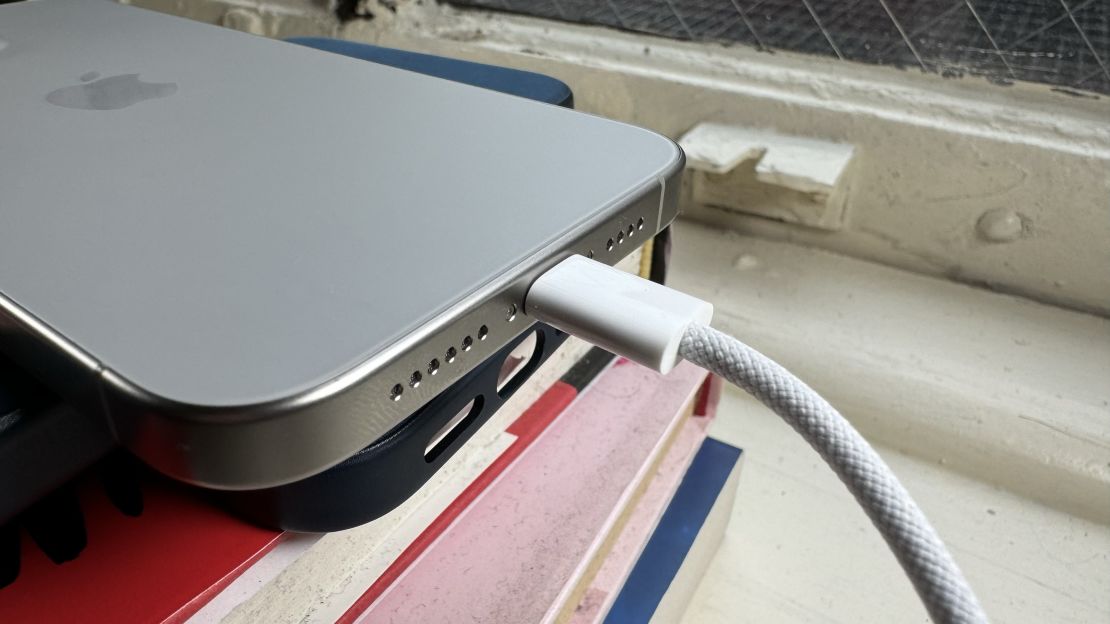
This means you can use the same cable to charge the 15 Pro or Pixel 8 Pro, which is a big deal. Granted, they aren’t really the same port: The Pixel 8 Pro can charge faster than the iPhone and transfer data in less time, but at the end of the day, what matters is you only need one type of cable for either of these devices. And it’s about time.
TL;DR: Yes, you’re seeing double — both the iPhone 15 Pro and Pixel 8 Pro have a USB-C port, which means you only need one type of cable to charge either device.
Professional cameras on the iPhone, AI cameras on the Pixel
There’s no debate here — both the iPhone 15 Pro and Pixel 8 Pro will give you some of the best pictures you can take on a smartphone. Their differences are much more philosophical than whether one is better than the other.
On the iPhone side, Apple wants you to treat the cameras on the 15 Pro as if they were physical point-and-shooters. There’s a new 48-megapixel main lens with a sensor that can let in more light and detail than before, and it’s equipped with three lens-equivalent shooting modes: 24mm, 28mm and 35mm. Accompanying it is a 12-megapixel telephoto lens on the 15 Pro that gets you 3x optical zoom, while the 12-megapixel tetraprism lens on the 15 Pro Max gets you 5x optical zoom. There’s also a 12-megapixel ultrawide on both devices.
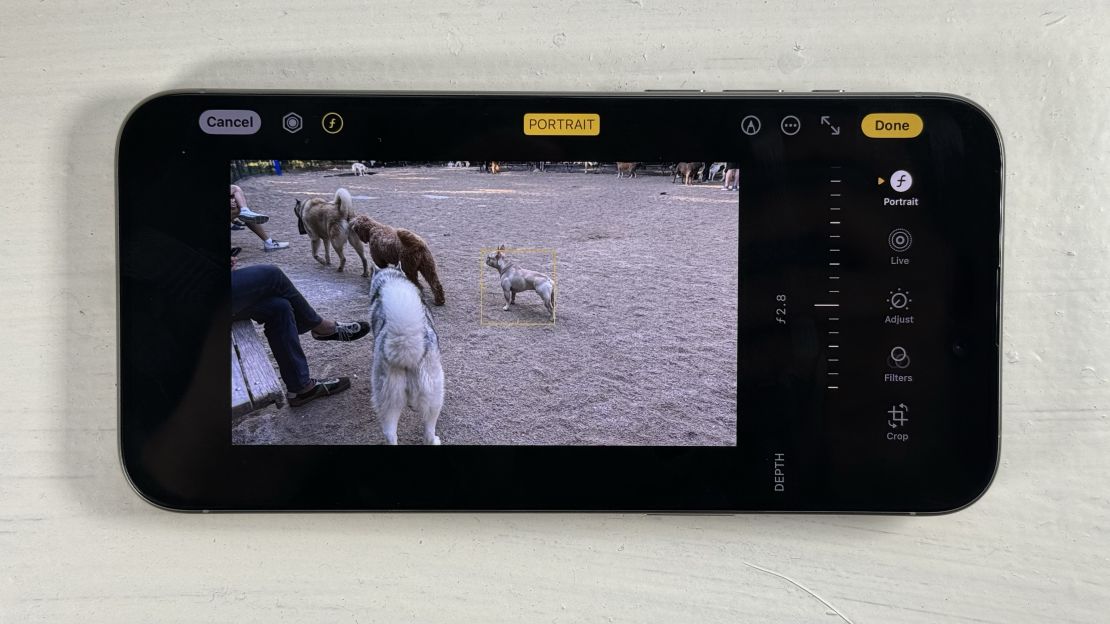
You’ll find all the usual iPhone shooting modes on board like Photographic Styles, Cinematic mode and Portrait mode, which has been improved so that soft backgrounds are more natural and can be enabled even on photos captured in the default “Photo” mode. Dig into the settings, however, and you’ll find a bunch of toggles and switches for things like ProRes capture (the ability to shoot full-resolution RAW images), LOG video capture (video recording without color information, which professional videographers prefer for accuracy in postproduction), default focal length options and more. They’re geared more toward those who know their way around a camera rather than your average consumer.
Meanwhile, Google takes an AI approach to photography. On the back of the Pixel 8 Pro is an improved 50-megapixel main lens paired with a 64-megapixel ultrawide and a 48-megapixel 5x telephoto lens. It’s similar hardware to the iPhone with similar shooting modes, but it doesn’t give you access to LOG video recording (although you can capture RAW photos and use a professional shooting mode for more granular control).
Where Google’s device shines is in post-processing, as is the case with every Pixel phone. With this generation, the company added a handful of features that play to their impressive AI strengths that no other company can match. This includes Best Take, which can help you get the perfect group picture by blending faces from multiple frames so no one’s blinking or looking away. You also get Magic Editor, which uses AI to move objects and subjects around the frame and alter the tone of images using different backgrounds and filters. Audio Magic Eraser helps to remove background noise from videos, Magic Eraser lets you remove unwanted objects and subjects from photos, Photo Unblur lets you unblur any picture in your Google Photos library — you get the point, there’s a lot of AI to go around.
I’m personally partial to the pro-level tricks Apple gives you on the iPhone 15 Pro, but I also really enjoy all the AI goodies in the Pixel 8 Pro. Either way, you’ll get a spectacular set of cameras that deliver in every lighting scenario. That also goes for video quality, which is much more similar than any iPhone and Pixel have been in the past.
TL;DR: You can’t go wrong with the iPhone 15 Pro or Pixel 8 Pro when it comes to camera quality. Really, it’s a matter of whether you like having pro-grade features or AI features for fixing your photos and videos later on.
The iPhone 15 Pro is the best-performing phone, period
Google continues to improve its Tensor processors in its Pixel phones, with the Tensor G3 being the best the company has ever shipped. With improved AI chops, faster everyday performance and improved efficiency, the Pixel 8 Pro — paired with its 12GB of RAM — is the fastest Pixel to date and can easily compete with other Snapdragon-powered devices like the Samsung Galaxy S23 Ultra.
But if we’re talking about raw performance, the iPhone 15 Pro simply can’t be beat. Apple’s new A17 Pro processor, the first of which to use a 3-nanometer process (aka it fits more performance into less space), is an absolute beast. Paired with 8GB of RAM, it gives you excellent performance in regular usage, when multitasking and especially when gaming, one of Apple’s strongest focuses with the 15 Pro series. It’s also proven to be pretty efficient, limiting battery usage to roughly the same amount as the A16 Bionic in the iPhone 14 Pro for all-day battery life.
Our benchmark tests back all of this up, with the iPhone 15 Pro scoring roughly 45% higher than the Pixel 8 Pro on Geekbench 6, which gauges a phone’s overall performance capabilities. Apple is a number of years ahead of Google when it comes to making its own chips, and it shows.
TL;DR: While the Tensor G3 in the Pixel 8 Pro will give you great day-to-day performance, those seeking the fastest performance they can get will find it in the iPhone 15 Pro.
Battery life is noticeably similar — as long as you don’t get the smaller 15 Pro
If you get an iPhone 15 Pro Max or Pixel 8 Pro, you won’t have to worry about battery life. Apple and Google have managed to ship huge phones with big screens and powerful processors while still providing all-day battery life. You can easily get through a 16-hour day with mixed use on either of them, whether that means going out for photo shooting sessions, gaming throughout the day or just scrolling through social media.
I can’t say the same for the iPhone 15 Pro, however. It’ll last you a full day, but whereas the 15 Pro Max or Pixel 8 Pro will have around 40% in the tank when you go to bed, the 15 Pro usually drops to 15% to 20% when my head hits the pillow. Keep this in mind if battery life is especially important to you.
All three phones take roughly the same amount of time to recharge; the Pixel 8 Pro comes with 30W charging, while the 15 Pro and Pro Max can reach up to 27W. I could juice them up from 0% to 100% in just over an hour, which isn’t bad. You also get wireless charging on each phone, but only the iPhone has proper MagSafe support, which means you’ll have to fumble around with the Pixel to get it to line up with your charger’s coils before it starts recharging.
TL;DR: If battery life is important to you, the Pixel 8 Pro and iPhone 15 Pro Max won’t disappoint you. Just steer clear of the regular 15 Pro.
Pixel 8 Pro has the smartest phone software
Based on Android 14, Google’s Pixel experience is top-tier, with a clean interface that’s warm and inviting to use. You’re greeted with an abundance of smart features that help improve your daily life like Call Screen (using the Google Assistant to answer and screen calls on your behalf), Direct My Call (which turns business phone trees into menus you can navigate to call the right department), Now Playing (showing you the song currently playing around you on your lock screen) and At a Glance (a widget that shows contextual information like events coming up or updates on your flight). In this latest version, you also get an AI wallpaper generator, smarter ways to use your voice to type and the ability to use the Assistant to summarize articles on the web.
Apple’s iOS 17 on the iPhone 15 Pro takes a different approach, as it improves upon the existing iOS experience and doesn’t try to be an ambient computer like Google’s Pixel phones. You get features like Contact Posters for custom caller IDs; StandBy mode, which turns your iPhone into a mini smart display; Live Voicemail for reading transcriptions of voicemails as they’re being recorded; the ability to leave video messages in FaceTime; and NameDrop for sharing contact info with a tap. It’s not the AI powerhouse that the Pixel experience is, and Siri is still … Siri (read: It’s pretty dumb).

If there’s one thing these platforms have in common, it’s their software support. Apple is known for supporting iPhones five to six years after they’ve been released, and you shouldn’t expect anything less with the 15 Pro. And with the Pixel 8 and 8 Pro, Google is guaranteeing seven full years of software updates, which is a first in the world of Android phones. If you’re someone who likes to hold onto their phone as long as possible, these devices will not let you down — you’ll be enjoying all the latest features for years to come.
In the end, these are two fundamentally different experiences that will appeal to certain individuals. Google and Apple continue to make them better each year, and for the Pixel 8 Pro and iPhone 15 Pro, these are two excellent software experiences.
TL;DR: The Pixel experience continues to get smarter with Android 14, while Apple’s iOS 17 is a great update for iOS fans. Plus, you’ll be getting updates years down the road no matter what you choose.
You’ll have an easier time with SIM cards on the Pixel
Apple no longer ships new iPhones in the United States with physical SIM card slots. Instead, it’s switched entirely to eSIM, which requires you to download your SIM card from your carrier to get it to work. This means that while it’s more secure than a physical SIM card, it’s a pain to move from phone to phone, requiring you to contact your carrier if you wish to move it to a non-iPhone.
With the Pixel 8 Pro, Google kept the SIM card tray kicking around, so you can pop out your card whenever you want and switch to something else. This is a bit of a niche advantage, but it’s worth pointing out nonetheless.
TL;DR: If you prefer having access to a physical SIM card, the Pixel 8 Pro is the only phone in this comparison with a SIM card tray. The iPhone 15 Pro exclusively uses eSIM.
Bottom line
Google and Apple hit it out of the park this year with their Pro phones. The Pixel 8 Pro and iPhone 15 Pro offer astonishingly well-rounded experiences with great design, performance, camera quality and battery life. And with multiyear software update guarantees, these phones are built to last. And with similar price points around $1,000 to $1,100, each one is a great pickup no matter how you look at it.
So it begs the question: How badly do you need an AI image editor, and are you sure you require blue bubbles in your texts to survive?
"Smartphone" - Google News
November 03, 2023 at 10:31PM
https://ift.tt/mFX1ojJ
iPhone 15 Pro vs. Google Pixel 8 Pro: Which smartphone is best? - CNN Underscored
"Smartphone" - Google News
https://ift.tt/4fwYqzW
https://ift.tt/nKJx2Ds
Bagikan Berita Ini
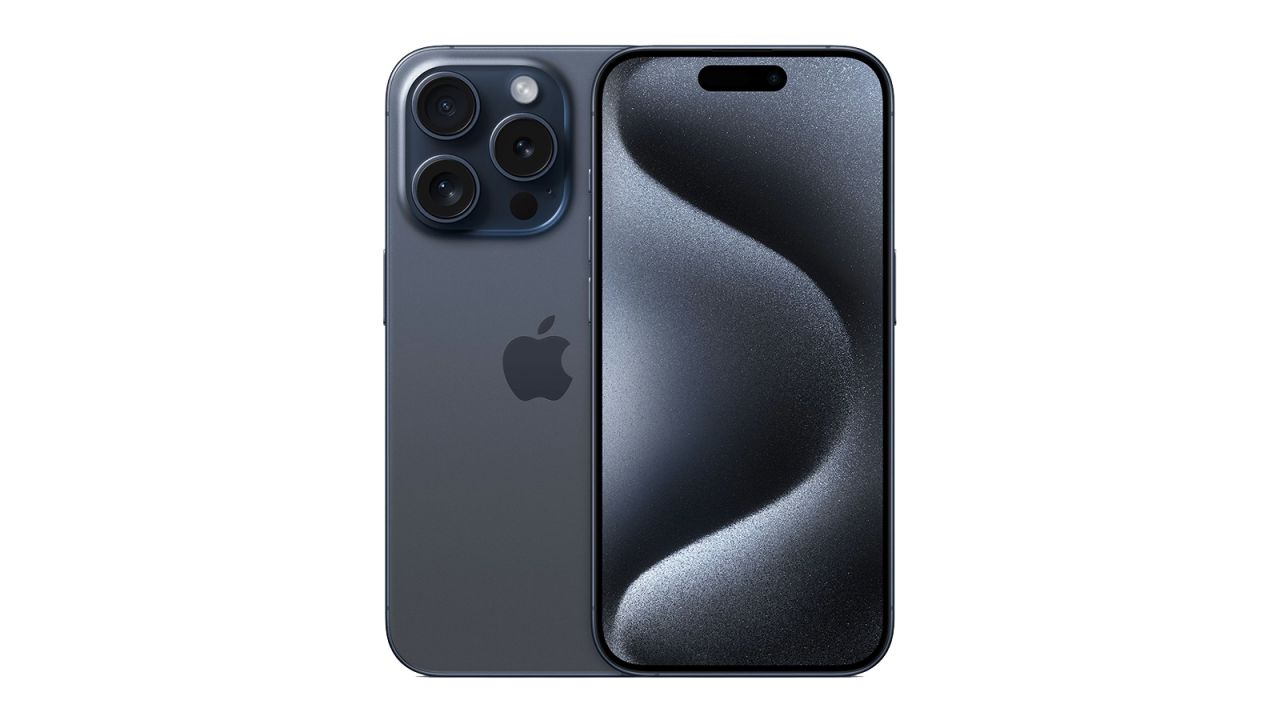

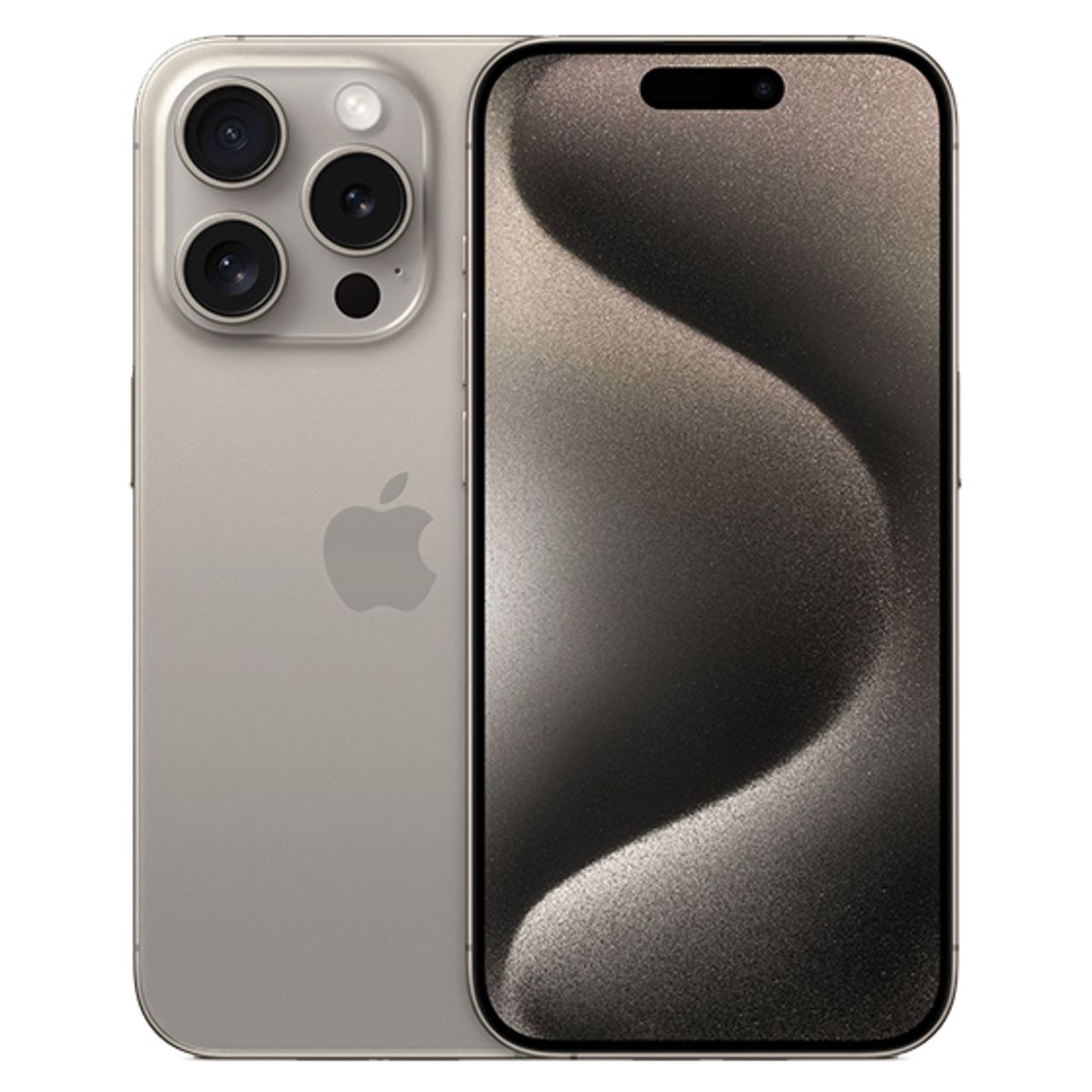

















0 Response to "iPhone 15 Pro vs. Google Pixel 8 Pro: Which smartphone is best? - CNN Underscored"
Post a Comment